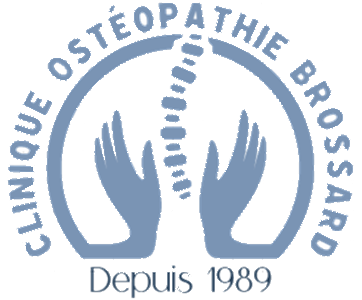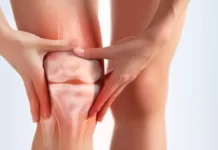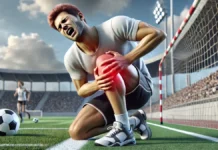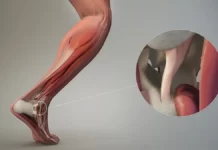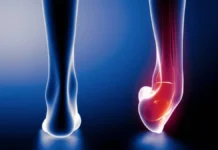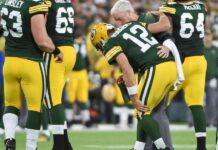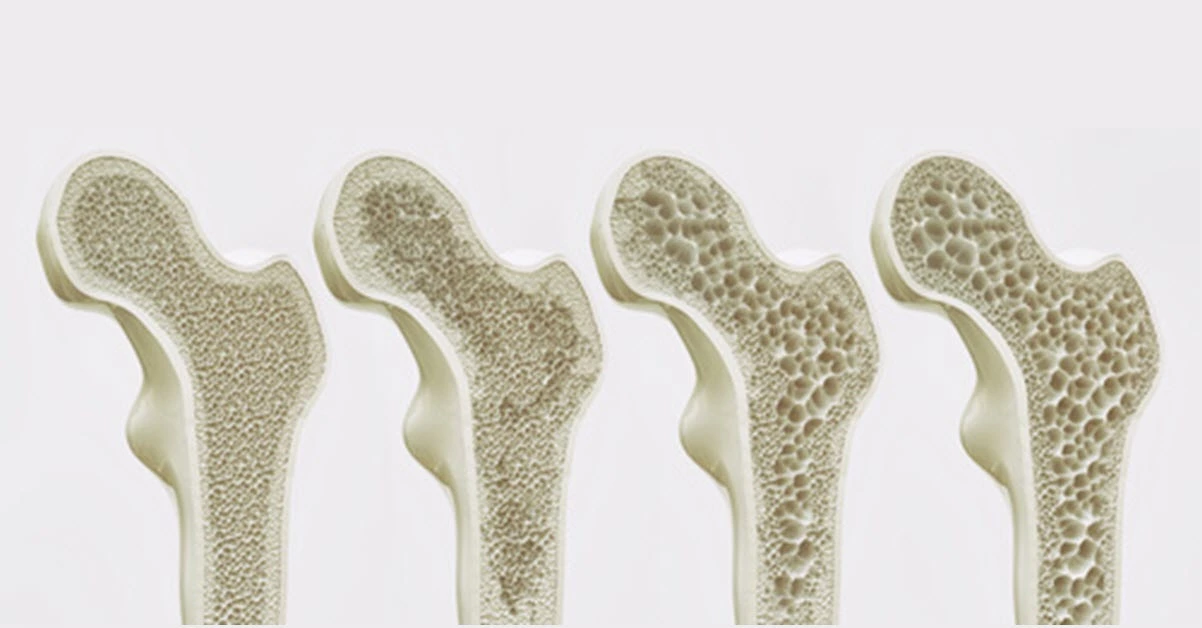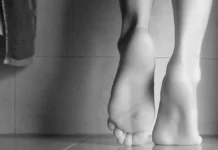- Sprains are injuries to ligaments (the bands of tissue that hold joints together)
- Ankle sprains occur when the foot twists or turns beyond its normal range of motion, causing the ligaments connecting the bones of the leg, ankle and foot to overstretch or tear.
- Inversion injury: the ligaments on the outer (lateral) side of the ankle are most commonly injured.
- Eversion injury: the ligaments on the medial side of the ankle, or above the ankle bone, can also be sprained, but are less frequently injured.
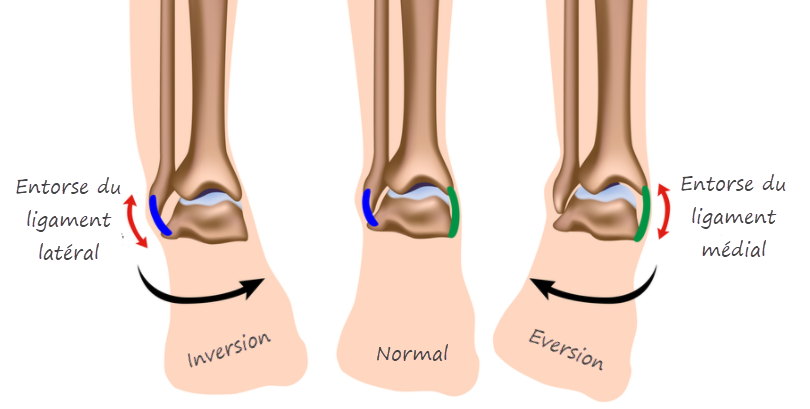
- A sprained ankle usually takes between 2 weeks and 2 months to heal.
- The ankle will feel better after a few weeks and will be fully strengthened within a few months.
- A severely sprained ligament, however, may take 9 months to a year to heal.
Recurrent ankle sprains are common; once an ankle ligament is sprained, it is often re-injured. In fact, 73% of people who have sprained their ankle once are likely to do so again. A re-injury is particularly likely if muscle strength and balance are not fully restored or improved beyond pre-injury levels.
- One or more ligaments are stretched or torn.
- Most commonly occurs in the ankle.
- However, if you fall and land on your hand, you may sprain your wrist. Skiing and other sports can increase the likelihood that you will sprain your thumb.
A muscle strain is an injury to a muscle or tendon (fibrous cords of tissue that connect muscle to bone),
- A muscle or tendon is stretched or torn.
- Most common in the back and hamstring muscles at the back of the thigh.
- Some sports can increase the risk of back or leg strain. For example:
- Football
- Hockey
- Boxing.
- Wrestling
If you play sports that use your hands and arms a lot, you may be more likely to have tension in your arm or hand. For example:
- Gymnastics.
- Tennis
- Rowing.
- Golf
Symptoms
The symptoms of a sprain include:
- Pain
- Swelling
- Bruising
- Not being able to use the joint
- Strains
- In addition to pain, symptoms of a strain include:
Symptoms of a muscle strain
- Swelling
- Cramps
- Difficulty moving
- If you completely tear a muscle or tendon, it is very painful and difficult to move.
Causes
Many things can cause a sprain.
- Falling, twisting or being hit can force your joint out of its normal position.
- This can cause ligaments around your joint to stretch or tear.
- Sprains usually happen when you:
- Fall and land on one arm.
- Fall on the side of your foot.
- Twist a knee.
A muscle strain occurs when you
- You twist or pull a muscle or tendon.
- It can happen suddenly or develop over several days or weeks.
A sudden or acute stretch is caused by:
- A recent injury
- Lifting heavy objects in the wrong direction.
- Overuse of the muscles.
Chronic stretching usually occurs when you move muscles and tendons in the same way for a long time.
Treatment
Treatments for sprains and strains are the same.
- To reduce swelling and pain for the first day or two
- Rest the injured area. If the ankle or knee is injured, your doctor may tell you to use crutches or a cane.
- Put ice on the injury for 20 minutes 4 to 8 times a day.
- Compress (tighten) the injury with bandages, casts, boots or special splints. Your doctor will tell you which one is best for you and how it should be tightened.
- Put the injured ankle, knee, elbow or wrist on a pillow.
Reference


